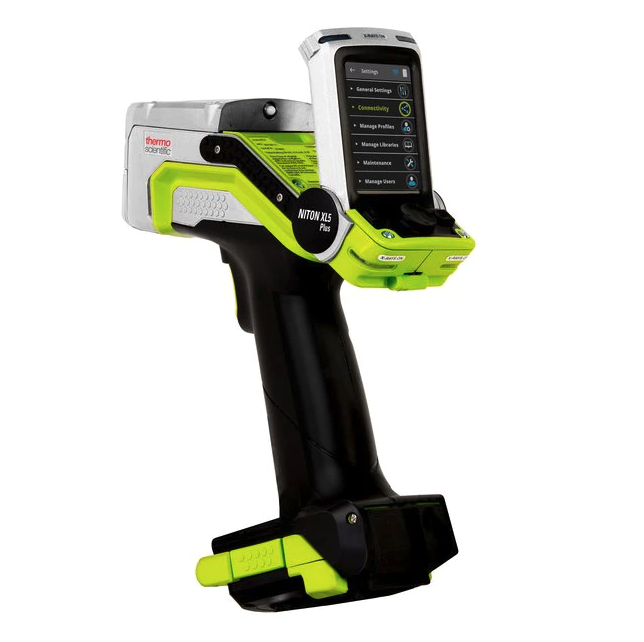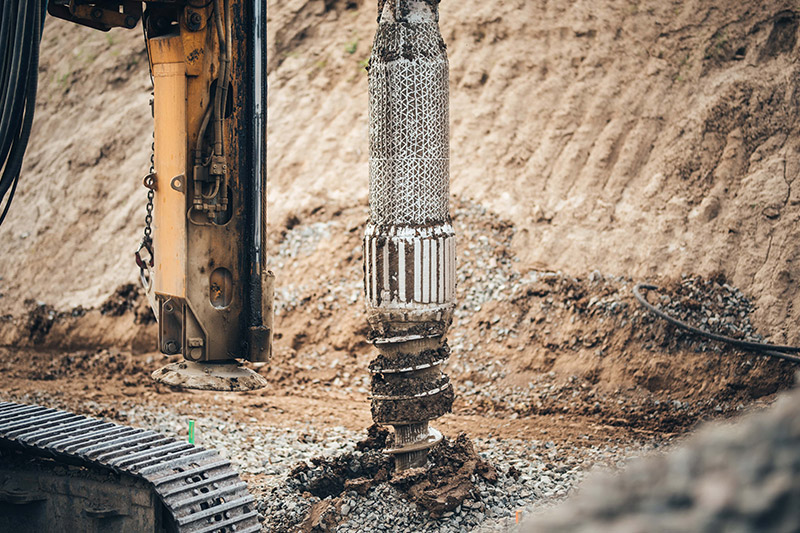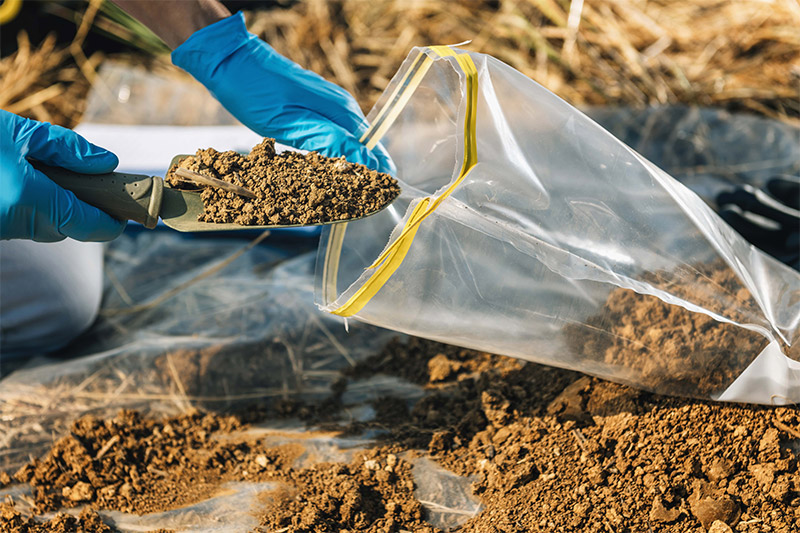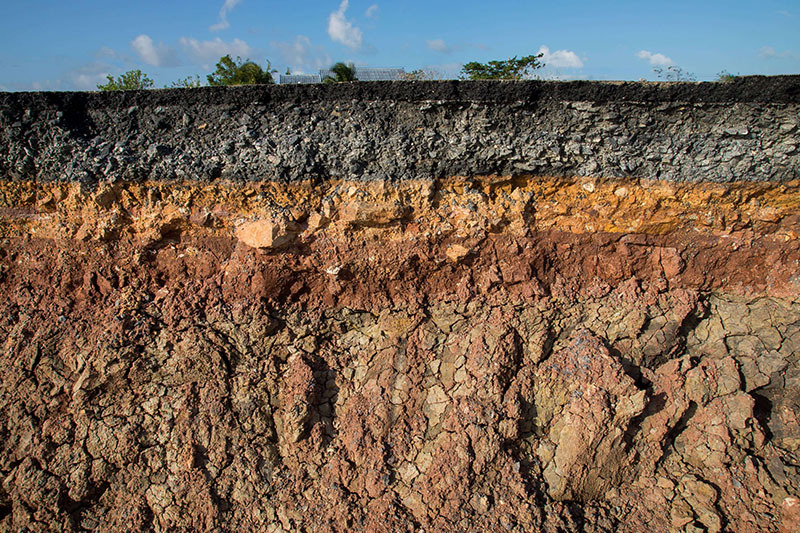Portable XRFs – The Big Guns In Mining And Exploration
Any mining company or contractor should conduct a due diligence phase prior to a property acquisition or before digging into a site.
Similarly, logging drill core to determine its geochemistry at the feasibility study stage makes sense to avoid any surprises further into the project.
But these phases take up valuable time, resources and money.
Thankfully, the mining and exploration industries continue to develop, and we now have specialised hand-held X-Ray Fluorescence (XRF) devices to make determining the geochemistry of rock and soil samples easier and faster.
There are a few Portable XRFs (PXRFs) on the market, but some are better than others.
Meet The Niton XL5 Plus
As a geochemistry tool, there’s something special about the Thermo Fisher Niton XL5 Plus.
Aside from its striking colour and sleek design, it’s one of the best handheld elemental XRF analysers out there to support your field-based decision making or to offer enhancement to any multi-element geochemical data plotting.
Combined with the right sample handling and protocols, it can save time, lower your costs and add value to your mineral exploration and mining settings when it is used in a fit-for-purpose application.

Benefits of portable XRF analyser
- Quantify up to 41 elements simultaneously
- Most analysis is performed within seconds – this increases your productivity
- You have the performance of a lab-grade EDXRF spectrometer in the palm of your hand
- It’s Intuitive, easy-to-operate interface
WiFi, Bluetooth and GPS – built-in - Hot-swappable battery, can be charged by UPS trickle-charge or 12V DC
- Has an internal system check standard
- Accessories built for the industry
- Backed by local support, knowledge, service
- Large, installed customer database
Features of portable XRF analyser
- Easy to use
- Lightweight
- Cost-effective
- Nondestructive
- Accurate results
- Instant results
- Can be used on-site
Chemical/ Elemental analysis is achieved through Thermo Fisher Scientific’s range of Niton hand-held XRF analysers.

Why You Need This For Mining And Exploration
There are many mining companies – across nickel, iron ore, uranium, gold and base metal mines – already using portable XRF analysers in their day-to-day processes as a screening tool.
They do this because they know it saves them valuable time and money.
Broad Mining Applications Of A Portable XRF
- Mineral exploration
- Environmental and mine closure
- Mineral processing and geometallurgy
- Mining and grade control
Let’s break this down, and dig deeper into some more specific uses.
Soil Sampling
This is usually one of the first stages of any exploration project.
Grids are often set up where samples are collected on a grid spacing, so with the PXRF you can easily take samples, sieve it, analyse it and move on to the next sample, getting through these large grids much faster than with traditional methods.
You can store the data in the analyser or send it to the field camp or lab for further analysis.
Real-time analysis with handheld XRF analysers is also a good way to prequalify samples for off-site lab analysis to ensure only the best samples are evaluated, saving you money.
XRF analysers can be used for in-quarry exploration and evaluating the composition of raw materials such as phosphate, sulphides, potash, gypsum and limestone for industrial use.

Real-Time Field Mapping
When you’re at ground level with your geopick, rock sampling, you can use the PXRF to test those rock-chip samples immediately to find out if certain elements are present.
You can then use the onboard GPS with the analyser and start creating contour maps of concentrations of the particular elements you are searching for before you even start to dig in an area.
PXRF analysers quickly deliver exploration data for quantitative geochemical analysis of metal concentrations for all types of mine mapping.
Again, you can then send that data to the field camp or the laboratory for easy collaboration and informed decisions.
The PXRF can help you map dangerous or previously inaccessible sites.
Portable handheld analysers can be operated virtually anywhere onsite and easily accommodate a wide variation of samples.
In The Drilling Phase
From a reverse circulation drill rig, your sample return can get you a read on any pathfinders or heat values.
This helps you decide whether to keep drilling or to stop drilling in an area.
The beauty of these samples is they are very homogenous.
Samples can be pre-screened with XL5 and you only need to send samples that have got known mineralisation back to the lab for testing. This can save you substantially, considering the lab costs involved.
Oil And Gas Exploration
XRF analysers are valuable for upstream exploration and production, offering rapid, onsite chemical analysis of rocks, cuttings, and cores that can be used for identifying formations and determining mineral composition of the rock.
Users can infer mineralogical properties favourable to oil and gas production from data collected in real time.
This provides qualitative and quantitative analysis for process and quality control, and rapid inspection and analysis ensures product chemistry specifications are met.
Portable options are lightweight and easy to use, delivering non-destructive analysis and lab-quality results in the field.

What is geochemistry and why is it important?
Geology studies the structure of the Earth, whereas geochemistry is concerned with the chemical processes that occur in the formation of rocks and minerals.
Geochemistry is vital to our understanding of processes that produce economic concentrations of minerals whether by hydrothermal, magmatic, metamorphic, hydraulic (both surficial and subterranean) or weathering agents, or all of these.
Exploration geochemistry is a spatial sampling and analysis methodology used when searching for mineral resources and routinely for petroleum.
Geochemistry can also help us identify some of today’s most important environmental problems, such as global warming, ozone depletion, and soil and water pollution.
What Makes The Niton XL5 Plus So Special?
The Niton XL5 Plus offers the latest in technology, being the only 5 Watt system available, providing best limits of detection in the range. Plus it’s smaller, lighter, and even more ergonomic.
With it you can obtain geochemical data in seconds and in situ. It’s built for the most demanding analytical applications.
The XL5 Plus allows the x-ray source and fluorescence detector to be closer to the sample, improving limits of detection and shortening measurement time, especially for light elements.
As well as metals, the XL5 Plus measures the elemental composition of scale, sludge, oil, powders and slurries.
Other Key Features Of The XL5 Plus
- Vivid navigation; customisable user profiles
- Micro and macro cameras
- Advanced analytical performance
- Smaller, faster, lighter
- Segment leading light element performance
- Customisable for individual applications
A special mining mode lets users determine the concentration of elements from Mg to U in various types of geochemical materials.
How XRF Technology Works
XRF occurs when a fluorescent (or secondary) x-ray is emitted from a sample that is being excited by a primary x-ray source.
The detector is responsible for determining the elements present in a given sample by accurately and nondestructively “reading” the fluorescent x-rays.
When the characteristic x-rays enter the detector, their electromagnetic energies are converted to electrical pulses. These pulses are then sorted into element channels in a Digital Signal Processor (DSP).
Next, the “counts” from each element are sent to the microprocessor, which contains the algorithms for calculating the concentration of each element from the count rate data.
This makes it substantially advantageous in mining operations, because it provides immediate feedback and allows for quick decision making, including:
- Whether to stop or continue drilling
- When to make equipment relocation decisions
- Where to focus on the grid
- When to select a sample for laboratory analysis
Thinking about implementing XRF technology to your mining analysis or inspection process? Speak to our team of specialists at Portable Analytical Solutions to find out how the Niton XL5 Plus is best suited to you or your company’s needs.
Portable Analytical Solutions (PAS) offers multiple analysis options for your mining and exploration projects.
Related Resources:
Applications Of PXRF In The Field
XRF (X-Ray Fluorescence) Further Explained
Eureka! Portable XRF And Gold Exploration
